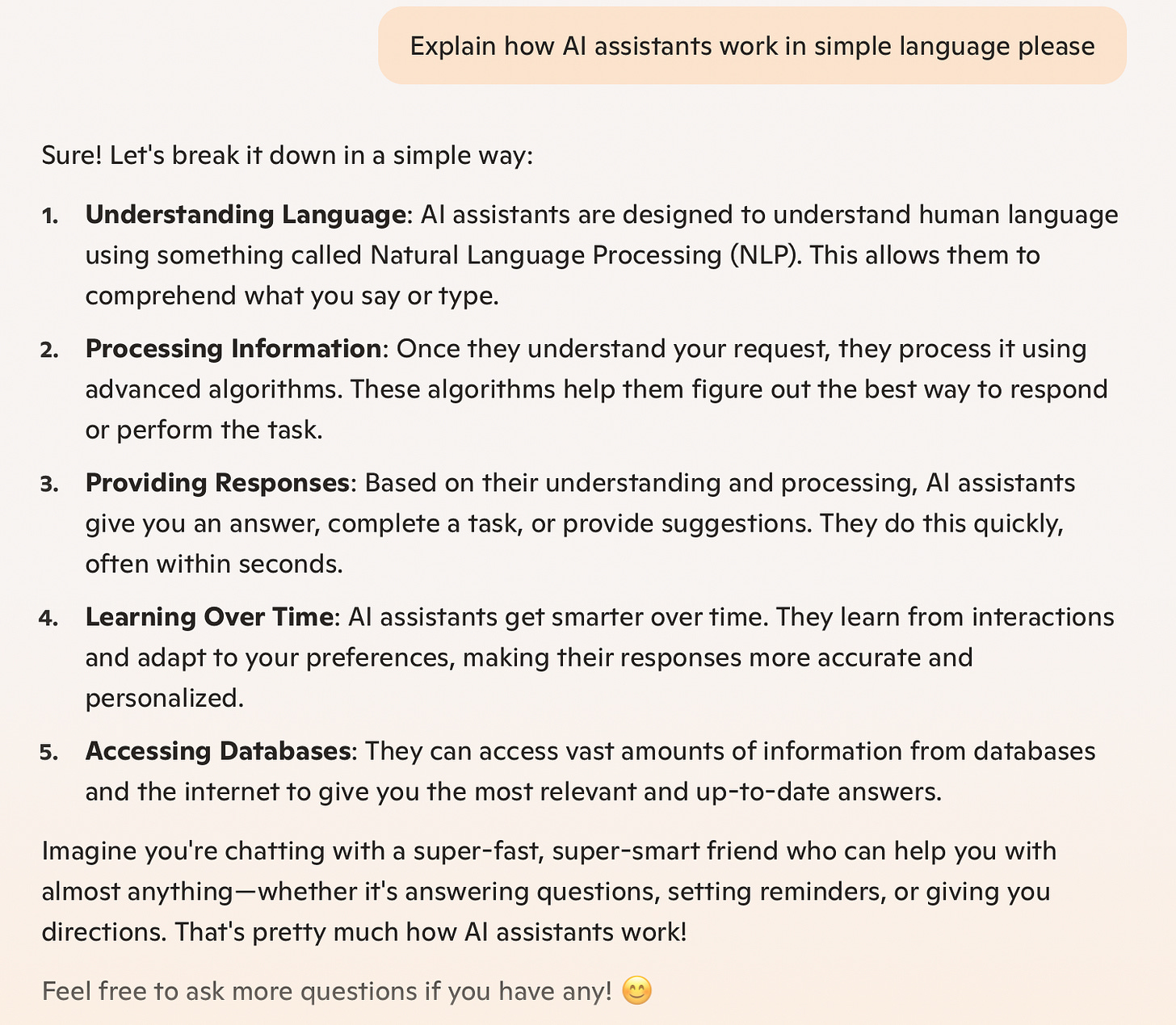This past month I’ve been using a fair amount of Generative AI assistants. You know: the ones you’ve been reading all about: Microsoft Co-Pilot; Google Gemini; OpenAI’s ChatGPT.
In the simplest language possible, these are AIs which have been fed gargantuan amounts of data. This allows them to spot patterns and then generate content of their own. (Hence they are often called generative AI).
There’s obviously a lot more to it than that, but for this article, that’s all you need to know. Although I did ask Microsoft Co-pilot to explain AI assistants in simple language, and this was its (smug) answer.
Yes, they make lots of mistakes. Apple for example rolled out a new feature that scanned news reports and automatically generated headlines. Some of them were just plain wrong. (This is often called AI ‘halucination’).
Luigi Mangione had not shot himself
AI don Gary Marcus recently showed some pretty rudimentary errors made by ChatGPT when creating simple tables about US states.
Then there are those outstanding questions about copyright – a critical question for the creative sector, which is worried studios will soon start churning out free AI generated scripts, potentially based on copyrighted data it might not own.
So they are far from perfect. But generally speaking it’s pretty remarkable just how useful they can be, if you know how to use them. The best uses I’ve seen are typically when people use these apps more like a very clever personal assistant or adviser, rather than just an advanced search engine.
For example, here’s a good example of someone showing how to generate an entire 3 minute film - audio, script, video - in the space of a couple of hours. Others upload company data into Microsoft Co-Pilot for 365 and then ask it to generate 5 different PowerPoint presentations - including in different styles (Elon Musk? Ab Fab? Derek Trotter? Whatever you want!)
The reason there is so much excitement and hype about AI assistants isn’t just because they are good. It is because they are extremely easy to use. The main feature of modern AI assistants is that the interface is in ‘natural’ (ie normal) language. You do not need to have a PhD in machine learning to get the most from them. There is of course a real art to ‘prompt engineering’ – knowing how exactly to tease the best information from your bot. But that can be learned far quicker than 7 years of university. (Here’s 15 tips from Microsoft on how to become a good ‘prompt engineer’.)
With most technology, the earth-shattering disruption doesn’t occur at the point of technological break-through, but when it becomes easy to use and widely available. Which is precisely what is happening now. The tech training firm QA recently wrote that sign-ups to their AI courses has increased by a staggering 370 per cent over the last few months alone.
Keep reading with a 7-day free trial
Subscribe to How to Survive the Internet to keep reading this post and get 7 days of free access to the full post archives.



